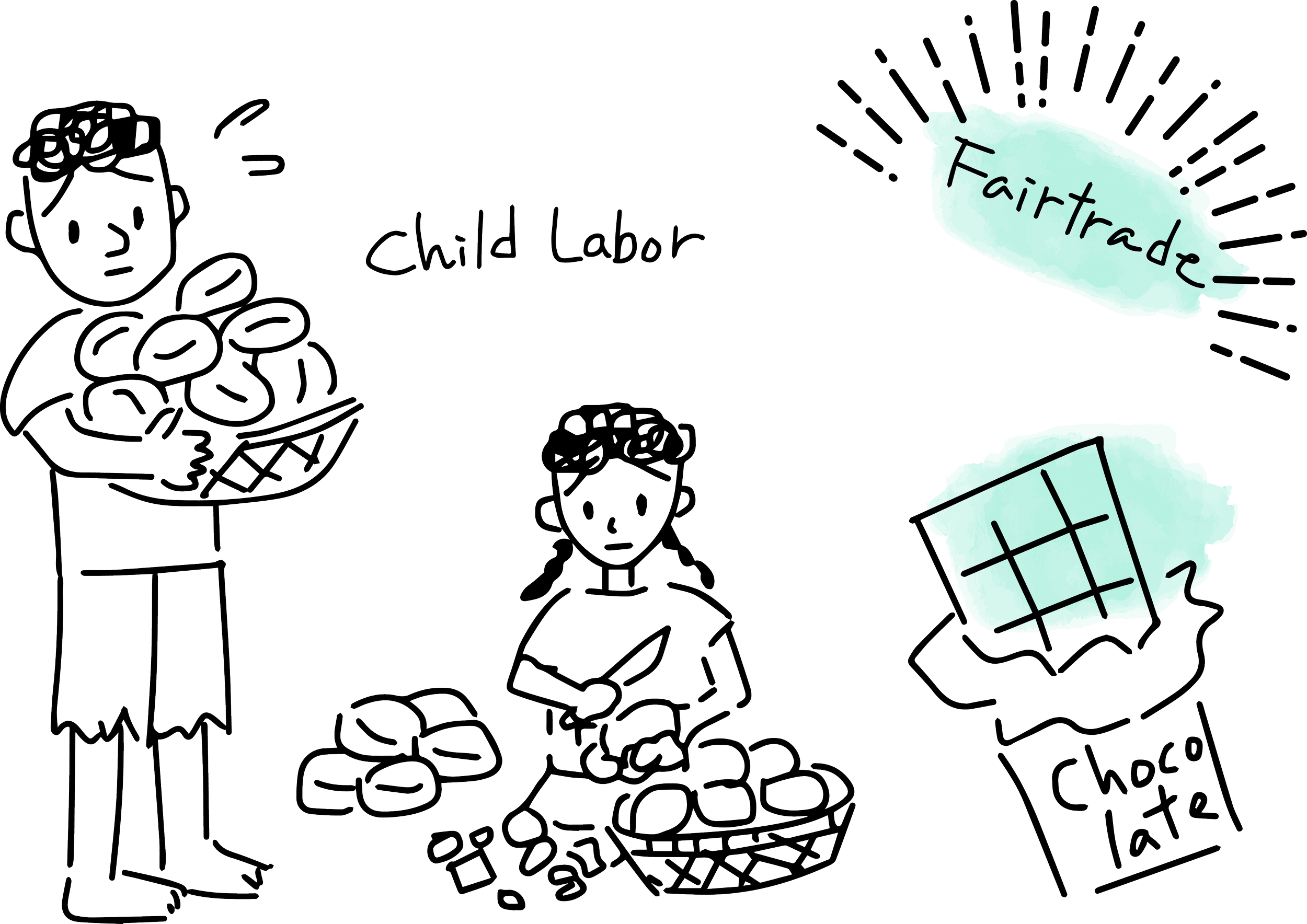In 2023, the chocolate industry is still not free from child labor. Millions of children are being robbed of their childhood and right to education while working on farms to meet corporate demand for cheaply sourced cocoa. Since this is an industry-wide issue, corporations tend to place the onus on the industry at large rather than assume liability individually.
Children working on cocoa farms use machetes and are exposed to harmful pesticides. This type of work is classified as hazardous child labor, the largest category of the worst forms of child labor, with an estimated 79 million children aged 5 to 17 working in dangerous or unhealthy conditions that could result in death, injury or permanent disability, psychological damage or illness. Because children’s minds and bodies are still developing while being subjected to this form of labor, they are more vulnerable than adults to workplace hazards and the consequences are more devastating and lasting.
Despite numerous efforts, international agreements have repeatedly failed to eradicate hazardous child labor from cocoa supply chains. In 2022, 95 percent of cocoa farming children in West Africa were involved in hazardous child labor.
In 2001, Mondelēz signed the Harkin-Engel Protocol, voluntarily committing to end the worst forms of child labor in West African cocoa production by 2005. Yet to date, the cocoa industry remains plagued by child labor with an estimated 1.56 million children work on cocoa farms in Ghana and Côte d’Ivoire, where 60 percent of cocoa production occurs.
Tulipshare, an activist investment platform, launched a campaign demanding that Mondelēz – the parent company of brands including Oreo, Cadbury and Chips Ahoy! – end child labor in its cocoa production. Tulipshare’s shareholder proposal requests that Mondelēz’s board, within one year, adopt targets and publicly report quantitative metrics appropriate to assessing whether Mondelēz is on course to eradicate child labor in all forms from its cocoa supply chain by 2025.
Despite Mondelēz’s Cocoa Life program and its monetary commitments, the number of children exposed to child labor on cocoa farms in Ghana has risen by 10 percent since 2009. While Mondelēz states it’s “on track” to achieve its goal of Child Labor Monitoring Remediation Systems covering 100 percent of Cocoa Life communities in West Africa by 2025, it currently reports only 61 percent coverage. Even if Mondelēz reaches this goal by 2025, that does not guarantee that its cocoa will be child labor-free.
Tulipshare, alongside Advance ESG, a shareholder advocacy organization, and all the sustainability-conscious retail investors backing this proposal, believes it is essential that Mondelēz adheres to the United Nations Sustainable Development Goal 8.7 to eliminate child labor by 2025. Failure to do so exposes Mondelēz and its investors to significant financial, legal and reputational risk. We agree with Mondelēz’s statement that “no amount of child labor in the cocoa supply chain should be acceptable,” which is why the company must publish the requested report to provide assurance that the company’s board is fulfilling its fiduciary duty to protect Mondelēz and its shareholders from adverse risks associated with child labor.
Constance Ricketts
Head of Shareholder Activism, Tulipshare


